Machu Picchu The Ancient Capital Of The Incas Empire
Travel
It is a fascinating that Machu Picchu was built over 500 years ago, and the large stones that were put in place have no mortar to hold them together, yet the city is sitting at the top of the mountain containing an earth quake fault and surprisingly the city’s 500 stone buildings are still standing until today. This ancient city is located about 50 miles from the city of Cusco. Macho Picchu stretches an incredible 116 square miles and is found within the Peruvian Andes, which is 7,900 feet above the sea level.
It was in 1911 where the Yale archeologist by the name of Hiram Bingham accompanied with his small team seven started their search in trying to find out the lost city of Vilcabamba. They could not have predicted what they would end up finding, but there search brought them to one of the fascinating locations the world had yet never seen or known of its existence. While they were on their way from Zuzco, the team came across a local farmer, Melchor Arteaga who told them about the tales of an old mountain ruins that were known as Machu Picchu to the locals. Later on the team came to prove that the tales were referring to the Lost City of the Incas.
The city was not known to many people but the locals knew about the ruins of the abandoned citadel of Machu Picchu. The city dates back at least to the 14th century and is of currently considered to be one of the wonders of the modern world. This is because the city consists of uncanny architectural designs that display the skills and abilities of its creators. Despite of living in the 21st century with modern technology and tools that have proved to be a thousand times, than our ancestor’s tools, but scientists are still baffled about how did the Incas build the city without using, steel, mortar or wheels? How did they make and how were they capable of securing the city stones in place?
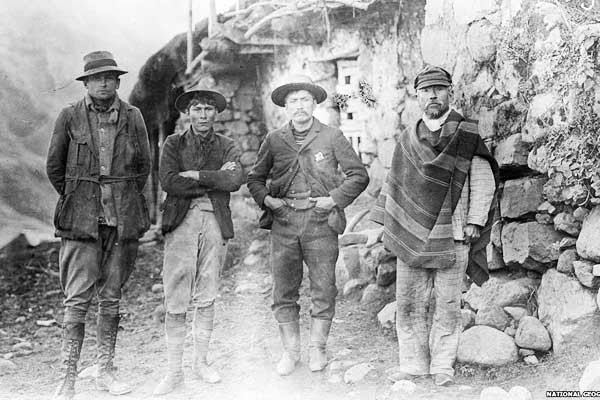
The Machu Picchu city has always left scientist and archeologists scratching their heads with no answers. This has led to many theories regarding this sublime city that was built in the clouds. Besides, there is a rise of so many conspiracy theories regarding the city too.
Here are some of intriguing theories regarding the city that has left many people baffled.
Who built the city of Machu Picchu?
Until today scholars have not been able to find any reference of the city existence in Inca literature or folklore. This leads to a question; who were the builders and dwellers of the city?
Archeologist do believe that Machu Picchu was capable of supporting a population of 750 people, but until today only 200 human skeletons have been excavated from the site. This seems to be a low number of population considering that many of the stones that are surrounding the site have what seems to be religious abodes. This has led some of the scholars to come up with a theory that Machu Picchu was built particularly for spiritual and ceremonial practices or maybe perhaps it was a site for burial.
Almost all archeologists do agree that the city of Machu Picchu served a crucial religious role, but there are still other theories regarding its purpose. Due to its distance from Cusco, some archeologist claim that the city was built to serve as a fortress to nobles from the increasing demands of the city life.
Some of the scholars argue that due to its terraces, it seems that Machu Picchu was used by the Incas for entirely practical purposes such as crop testing or as a trading center. Some of the historians have used a cell-like area which is found near the Temple of the Condor, to make their point that the city was used as a prison for outlaws. But who lived here and what was their purpose of living here. There is still a jury out there.
The Machu Picchu Elongated Skulls
When Bingham and his team excavated the site, they came across at least 100 skeletons along the Machu Picchu complex. But these were not normal human skeletons, as they discovered that the skeletons had elongated skulls. Archeologists have discovered more of these skulls in both Inca as well as Maya burial sites.
Scientists and archeologists have tried to come up with a common explanation regarding these odd shaped skulls. They claim that the skulls were formed using a binding technique. As most of the skulls were found to be buried in cemeteries for nobles, archeologists have come up with a conclusion that the Inca royalty shaped their heads artificially making them elongated to prove their power of dominance.
Was Machu Picchu just a sacred site or was there something more?
There are more than 500 buildings along the Machu Picchu complex, but one of the most iconic buildings found on the site is the Temple of the Sun which is sometimes referred to as Torreon. Just as its name suggests, archeologists do believe that this identical and outstanding architectural building served as a ceremonial building for all matters related to the sun god inti. How did archeologist come to think about this?
The iconic building consists of a carved rock positioned at the top which creates shadows that correspond entirely to the two solstices. Due to this, archeologists do believe that the temple was both used for astronomical study as well as religious rituals and ceremonies.
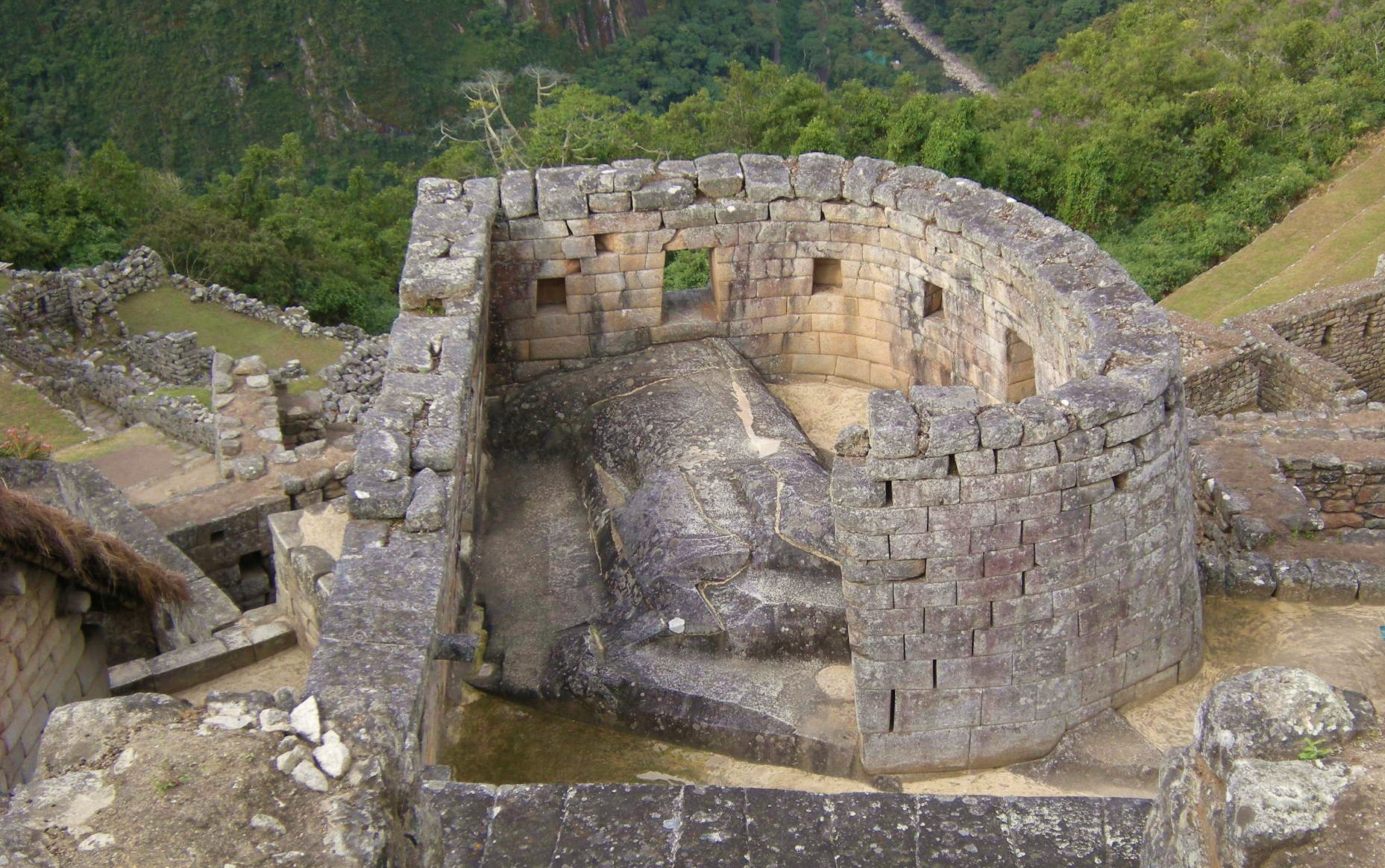
Besides, of the temple being used to study and praise the sun, it has a mysterious, perfectly curved cave below it. For many years archeologists believed that the area was used as a mausoleum mainly for the royalty. But the cave is full of strange details, especially along the stone staircase which leads to nowhere. This also proves the cave had another purpose. What purpose was that? No one knows, as it remains a mystery until now.
How were the Incas able to carry such huge stones to the site?
Most of the rocks that were used in building the Machu Picchu weigh over 50 pounds. Scholars still have no idea to how the builders were capable to carry such huge stones given that they had poor technology. It is assumed that by that time the Incas had no wheels that could have pushed the rocks up the steep Andean mountainside. There is a mainstream theory is, that hundreds of men had worked together pushing these rocks up the mountain.
Even what is more surprisingly than the fact that the Incas were able to get the rocks up the Machu Picchu site, is that all the stone structures were curved by using those poor primitive tools. Despite the fact that the Incas had no steel tools, the builders were able to position these stone perfectly and tightly that it is virtually impossible even to fit a piece of paper through them. This the reason the buildings are still standing, despite the fact that it was built upon the mountain pick that is on an earthquake fault line.
There is another theory that tries to explain how the Incas were able to carry these stones and stick them together. The theory suggests that the Incas used wet wooden wedges to do that. When these wedges froze, it led to fissures within the rocks which enabled to bind them together. But this theory has a problem as the theory does not explain why the Incas sometimes had to carve the huge structures breaking the single stones or how they were capable of fitting the stones creating strange patterns.
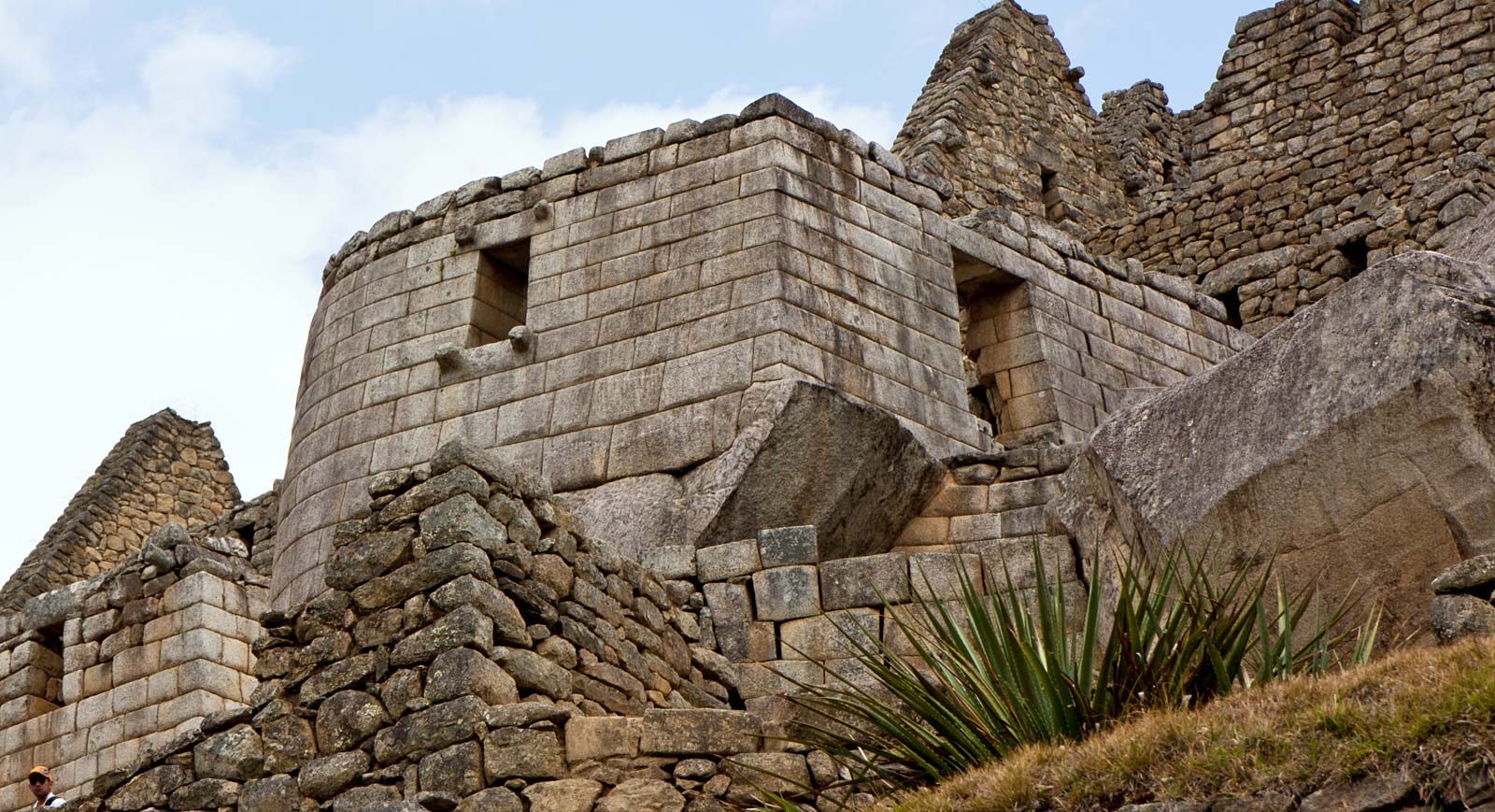
Did the aliens have a hand in helping the Incas build the Machu Picchu?
As it has been noted above, most of the scholars do not agree with the theory that the alien race built or had lived in the Inca empire. Besides, there are still many symbols that reflect astronaut theory, which suggest that the city of Machu Picchu was perhaps built by a more superior race, or at least one of the older and more advance tribe.
Even though this might seem a bit outlandish, but one of the astronaut theorists’ main claim is so interesting. People who defend this theory offend argue using three distinct design techniques which are found throughout the Machu Picchu complex. It is normal to notice heavy, finely carved stones below and then there are also sloppy layers of tiny stones upon the tops of many Machu Picchu buildings.
Despite the fact that this theory is clear, that it is far-fetched, and it raises so many questions. Why would such a civilization regress its architectural activities with time. As according to the astronaut theories, the older masonry below seems to be from a superior civilization that dates back before the Incas existence.
Another question that has left archeologists scratching their heads is regarding the sacred stone. Was it really sacred?
When someone looks over the mountain peak of Huayna Picchu which is in located to the Northwest region of the Machu Picchu complex, there is a carved stone which is known as Roca Sagrada meaning the Sacred Rock. The stone measures over nine feet high and has a 23-feet base. The stone is one of the things that impresses the viewers that visit the Machu Picchu complex due to its uncanny resemblance to the Cerro Pumasillo mountain slope. There is no explanation to why the rock was curved to look exactly like its background or if those silhouettes were carved on purpose to have such a look.
But what is clear about the stone, is its purpose. Many scholars think that the sacred Rock was used by the Inca priest in appeasing mountain spirits which were known as Apus in the Inca religion.
That means the stone had its critical religious significance. Also there are theories that the Rock might have been used for a crucial geographical function. As the rock is situated upon the northern edge of the city that means that it could locate that path which passes between Machu Picchu and the Huayna Picchuu.
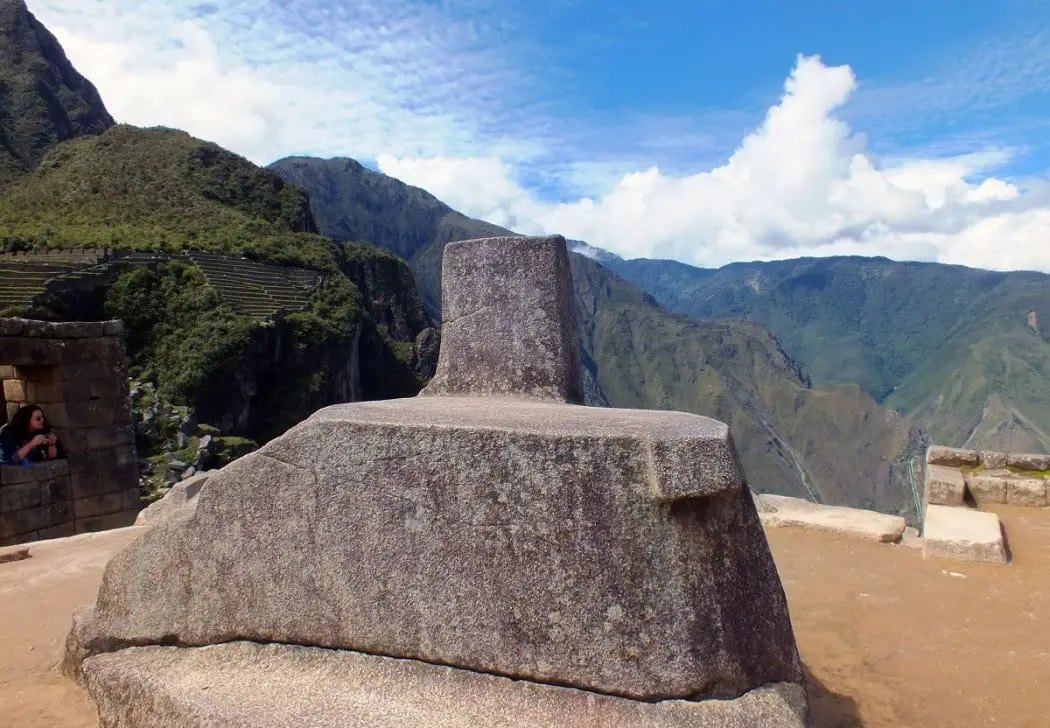
Another mystery that is found on the Machu Picchu complex is the Intihuatana Stone. It is still not clear what this stone was used for. Was it a Sundial or heavenly portal?
The name “Intihuatana” was created by Bingham from local Quenchua, which means something like the place that binds the sun. The main reason that led Bingham to choose this name was because the four sided Intihuatana top produces a shadow that perfectly resembles with the march and September equinoxes. Many scholars do believe that the Intihuatana played an important role in agricultural purposes. But there is still an unanswered question regarding the Intihuana where was just a sosphiscated sundial or was it used for even a higher purpose?
There is a new theory that has been put forward by an archeologist by the name of Giulio Maglia who has led to the Intihuatana mystery to have a hot discussion once again. Maglia argues that the stone may have served a more important religious purpose, according to his theory, Machu Picchu was created to represent the last leg on a pilgrimage that mimicked the Inca famous myth of a journey that began from the Island of the Sun all the way into the stars. Magli argues that the climb to the top must have been the final destination of the Inca pilgrims. The mystery still remains as to what would have led the pilgrims take such an impractical location that is extremely far from the riverbanks.
However, what is more interesting is that Intihuatana is not different to Machu Picchu. Archeologists have come to discover another stone, which is identical to Intihuatana just in a nearby city of Pisac, even though that stone is not well preserved as compared to that which is found in Machu Picchu. Many scholars believe that there were many stones spread throughout the Inca cities, but the Spanish invaders had destroyed them when they conquered the cities.
What was the reason that led the city of Machu Picchu to disappear?
There is no exact time and reason to when and why Machu Picchu City fell. Many scholars do not believe that the city’s fall was violent overthrow. This is due to the fact that all the skeletons that were excavated from the site showed no signs of any physical trauma, and there is absolutely no record of the Spanish invaders to have ever invaded the region.
Some of the mainstream historians do blame smallpox, syphilis and/or measles as being the reason for the decline of Machu Picchu. This might be true as the Spanish are known to have brought these diseases into the Latin America, and there were close to the City as they reached the city of Cusco. In case the traders traveled within the Machu Picchu, then there is no doubt that they could have carried the diseases to the city.
There is still another theory regarding the Machu Picchu fall, and the theory suggests it was due to the rise of expenses for maintaining the city, and the declining Inca Empire could no longer finance. As the city had suffered through civil wars, eruption of epidemics as well as the Spanish invasion, this led to the Inca royalty to have more problems to worry about than keeping up with Machu Picchu demands. This means that the Machu Picchu residents must have fled and abandoned the city and went to other places within the Inca Empire to seek for other opportunities.
As there is absolutely any written records from European colonists or the locals, experts can only guess the techniques that were used by the Incas builders to build the city of Machu Picchu and what purpose the city was meant to serve. That means that we have to rely on guessing as to this time there is no evidence.
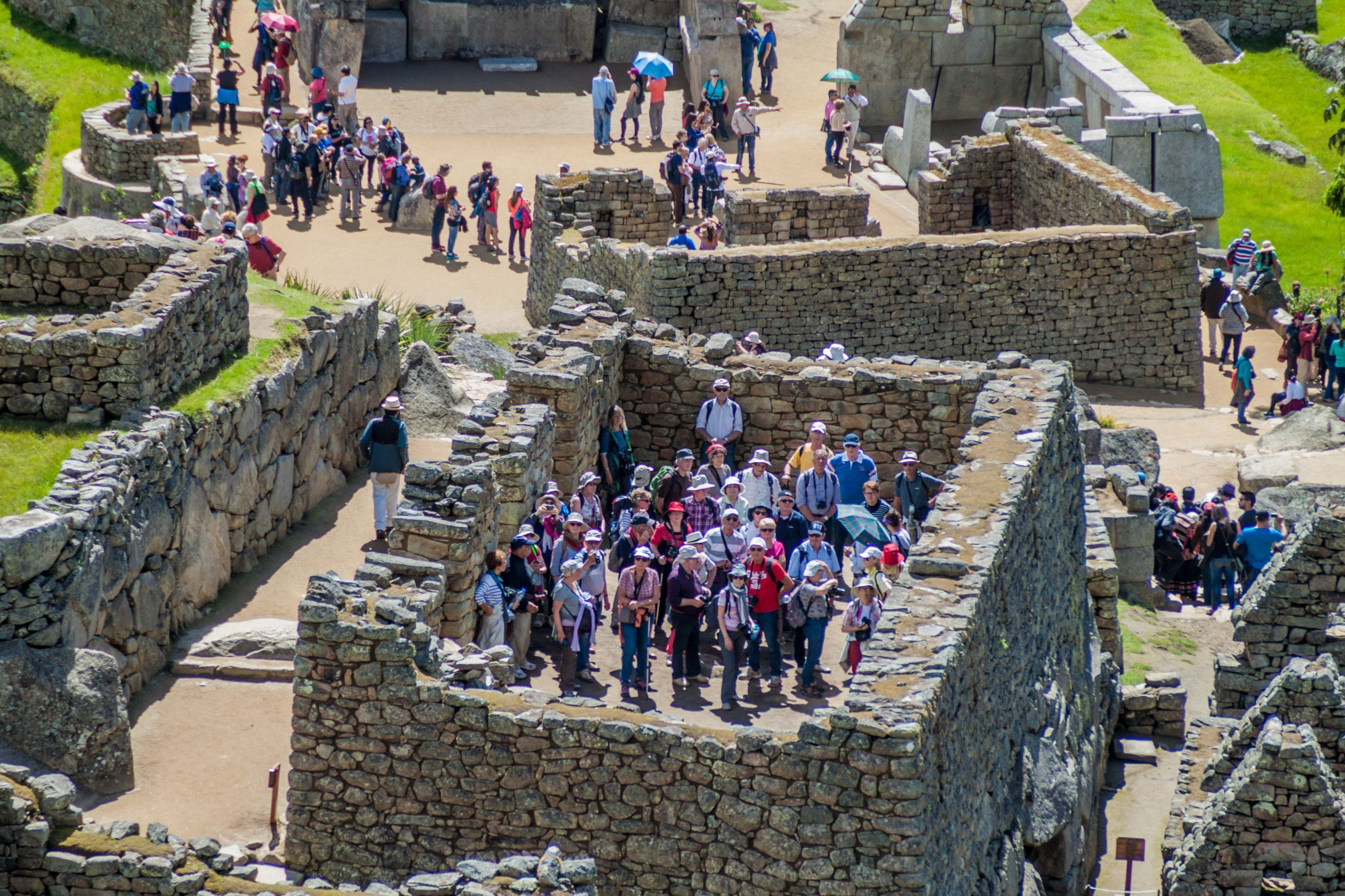
If you want to explore the ancient world, then visiting Machu Picchu would serve your purpose. You will get to see how skilled and genius the ancient architectures were. But what you have to know is that the site will leave you with more questions than answers. It is full of mysteries that cannot be answered. It seems like what we know about our ancestors is just a tip of the iceberg. There are many things that we do not know about them, and the more we try to understand the more we keep getting confused.
There are unlimited structures made up of huge stones some of them weighing tens of tons that there is no any proper explanation that can shade a light to how they managed to do it. These structures are located in different places around the world from China, North America, South America to Africa. There are gigantic pyramids throughout the world which have left experts scratching their heads not only about the structures, but what purpose did they serve.
In case you want to explore the ancient world, Machu Picchu might be a good place to start with. Who knows, maybe you might offer the world with proper explanation about what had taken place on the site.

Mwijage Prince